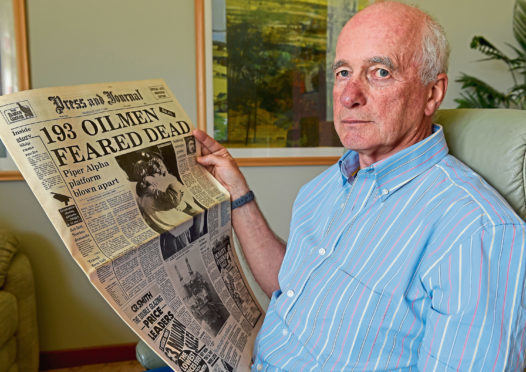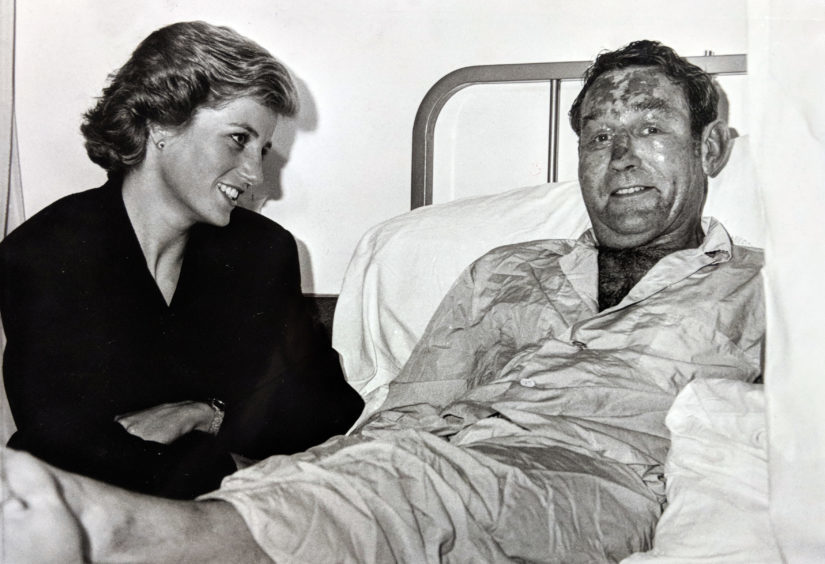The scale of the Piper Alpha disaster was beyond anything Aberdeen’s flagship hospital had experience before. At the helm was medical director Gordon Stone, who vividly recalls the extraordinary team spirit show by staff.

As July 1988 began, staff at Aberdeen Royal Infirmary felt readier than ever to deal with a large-scale emergency.
A recent exercise based on a train crash scenario had shown the “major accident plan” was functioning well – and a new burns unit was due to open within days.
But nothing could have prepared them for the sheer enormity of what they were faced with on the night – and in the days, weeks and months that followed.
As medical director, Dr Gordon Stone was responsible for all onshore health services during the rescue operation and in the aftermath.
After receiving a call about the unfolding disaster, he put the plan into action and headed to the ARI control room to coordinate the response.
And he has never forgotten either the scale of the physical and emotional distress or his pride in his staff’s team spirit, professionalism and willingness to go the extra mile.
Staff response
“We did not have any particular problems getting staff. Some were asked to come in immediately while others were on standby until the situation became clearer.
“However, significant numbers of staff and others with links to the NHS came in of their own volition during the next few hours as the media reporting became widespread.”
Most patients were suffering from smoke inhalation and injuries suffered in the escape, including burns.
The fact that the latter could be treated in a brand new unit was testament to the way people rallied to the cause, he recalls.
‘Doing what was required’
“It was a week away from being commissioned, but the external contractors got this process completed in a matter of hours to bring it into use.”
“This was typical of how the staff and others dealt with the situation,” he added.
“The general attitude was of people doing what was required and ignoring shift and rota issues.”
Only a small number were technically classed as “seriously ill”, he noted, and most were dealt with in a reasonably straightforward manner.
“However, that assessment relates to their physical situation, rather than reflecting the emotional and mental trauma that they had been through.”
At a time when issues such as post-traumatic stress were less understood, that applies equally to the staff involved.
Some who rose magnificently to the challenge of working protracted shifts then suffered mental health issues after their exertions had finished.
Dr Stone added: “Most things worked very well, but we had not appreciated the emotional trauma of the survivors and, indeed, the fact that many staff knew people who had been on board the platform.
“The uncertainty about the outcome and survivor numbers went on for several hours after the first notification and this compounded the problems for the latter group in particular.
“Nowadays, trained counsellors are more widely available and the emotional side of major accidents is more commonly recognised. But at the time, we relied on the hospital chaplaincy staff to undertake this role, which they did willingly.
“We were also quite unprepared for the large numbers of relatives of survivors and missing who turned up and therefore finding somewhere in the hospital to put them was an issue.
‘Urge to help was overwhelming’
“I prepared a report for the Scottish Office and we revised the major incident plan once again. There was no clear evidence of staff having emotional or mental problems after the event, but we probably didn’t look closely for it.
“The overall feeling was of a time when everyone pitched in to do what they could, when responsibilities were blurred, when time was disregarded and when the urge to help was overwhelming.
“I felt very proud of the way the staff and others performed over several days of difficult times.
“It may sound perverse, but a number of those working at the time said how much they enjoyed it.
“That was not to downplay the enormity of the tragedy, but rather it was a reflection of a rare example of true teamwork when absolutely no administration or bureaucracy was allowed to interfere with the key task of helping others.
“And that I can readily understand.”

